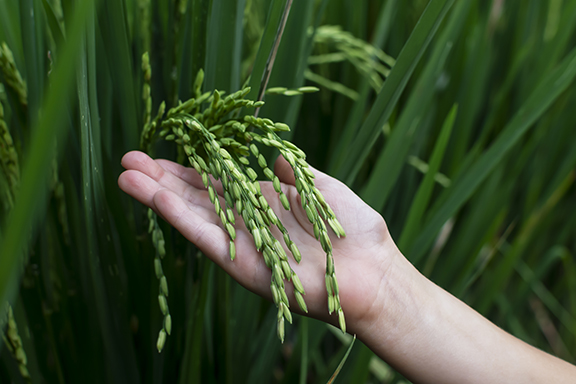The Rice Department has set its mission to promote and support farmers by increasing production efficiency, enhancing their resilience, and adding value to rice through processed, high-value products. Mr. Natthakit Kongthip, Director-General of the Rice Department, outlined the 2025 action plan in line with the government’s 10 urgent policies and the Ministry of Agriculture and Cooperatives’ 9 key initiatives, all of which align with the national strategy and relevant master plans.
New Rice Varieties to Roll Out in 2026
The Department is advancing 22 projects, including: the promotion of local identity agricultural products (rice), upgrading product quality standards, supporting value-added processing, producing and distributing rice seeds, reducing production costs for rice farmers, and applying sustainable rice production technologies to cut greenhouse gas emissions. For 2026, projects include the construction of a National Rice Gene Bank, rice collection and distribution centers, and campaigns against rice-straw burning.
For 2025, seed development is a top priority. The Department has submitted new varieties for approval to the Department of Agriculture. These varieties are seen as “secret weapons”—short-maturity rice strains. Three to four new varieties are set to be launched, pending approval. Once certified, the seeds will be multiplied over 3–4 months to build sufficient stock, with nationwide cultivation expected in 2026.
100-Day Cultivation, 1 Ton per Rai
Once approved, the new varieties will be tested at centers in Phitsanulok, Chainat, Suphanburi, and Phichit, where large-scale cultivation is possible, alongside awareness campaigns. The goal is for farmers to achieve yields of 1,000 kg per rai with cultivation cycles of just 90–100 days, thereby boosting productivity and income.
Regarding production costs, the Director-General noted that seed costs are not the main burden—since government subsidies keep seeds at 3–4 baht/kg. Major cost drivers include machinery, energy, electricity, labor, and land rent.
State Support to Cut Costs
He suggested government support should focus on reducing energy and fuel costs, allowing farmers to access subsidized “green diesel” like fishermen. Instead of direct subsidies, lowering agricultural energy and electricity rates would ease production costs. Additionally, land rent—averaging 1,200–1,500 baht per rai per crop—remains a fixed burden, further justifying short-maturity rice that can be grown more frequently.
Promoting Red Azolla and Fish Farming
The Department is also promoting sustainable methods to lower costs. One approach is using red azolla in rice fields, which suppresses weeds, reduces CO₂ emissions, and cuts fertilizer needs by up to 30%. Demonstration plots in Phitsanulok, in partnership with the private sector, are under way.
Furthermore, collaboration with the Department of Fisheries encourages integrated rice–fish farming, where red azolla supports fish habitats. This provides farmers with supplemental income, reduces chemical use, and ensures safer rice. Fish species such as silver barb are deemed suitable.
Community Rice Centers to Double in 3 Years
Under a 3-year plan (2024–2026), the Ministry of Agriculture and Cooperatives aims to expand community rice centers from 4,985 centers in 2024 to 9,985 centers by 2026. These centers will become key hubs for producing quality rice seeds.
Seed production is set to rise from 200,000 tons in 2024 to 490,000 tons in 2026, with marketable quality rice output increasing from 12 million tons to 16.64 million tons, benefiting more than 295,650 farming households. This aligns with Thailand’s 64.6 million rai of rice farmland across 4.84 million households.
Additionally, projects are being accelerated to expand post-harvest drying facilities and strengthen community rice centers as hubs for seed distribution, processing, and value-added rice products.
https://www.prachachat.net/breaking-news/news-1789937



